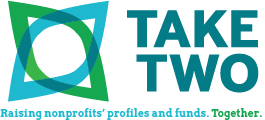
3 Questions To Help You Prioritize Communications When You’re Pressed For Time
The title of this blog post should really read “Three Questions That Help You Prioritize Communications When You’re Pressed For Time, as in All The Time.” Because let’s face it, there’s no real downtime or slow time when you work for a nonprofit.
There are times when you’re not as busy as the rest of the time, when you’re rushing about in ten different directions trying to make your deadlines, deadlines, deadlines.
So here are three questions to help you figure out what and how to prioritize in your nonprofit’s communications, when you have multiple, competing tasks. Ask yourself these questions about each of the items on your “must-do-right-now” list and see where you end up.
-
What are the consequences/results of communicating this info right now? (Instead of tomorrow or next week)? – If the consequences are internal (my development director wants this to go out) versus external (no one can RSVP for this event if I don’t announce it in time!), external usually wins.
-
How soon can I get this out? How much time do I need? – If the communication is going to take you more time than you have at that time, that’s an indication that you either can’t do it right away, or that you can’t do it “perfectly” (or in the way you initially envisioned), or perhaps, can’t do it at all. Asking this question helps you figure out alternatives to how you might communicate something when you’re pressed for time, IF you really do need to communicate it that day.
-
Who really needs this info? And what’s the best way to get it to them? If you’re clear about that, then you might realize that your intended mode of communication – which may be the reason you aren’t able to prioritize it – isn’t the most efficient.
Now, all of these questions relate to communications and marketing, rather than engagement, which is what tends to get pushed to the bottom of the list. Engagement isn’t a rush-job. It needs to be done consistently and long-term to really bring your nonprofit the results you seek.
And, let’s be clear, this 3-question tactic is not meant to be used on an everyday basis as the default. The same questions can and should form the basis for strategic planning of your communications. Which then should prevent too many moments of crisis around prioritizing what and how to communicate.
But we do see communications staff at nonprofits operating in “crisis mode” quite regularly. And the real remedy for that is that long-term (year-long) strategic planning, including realistic allocation of resources (time and money). In the short-term though, ask yourself our three questions, take a deep breath and remember, you can only do one thing at time!





